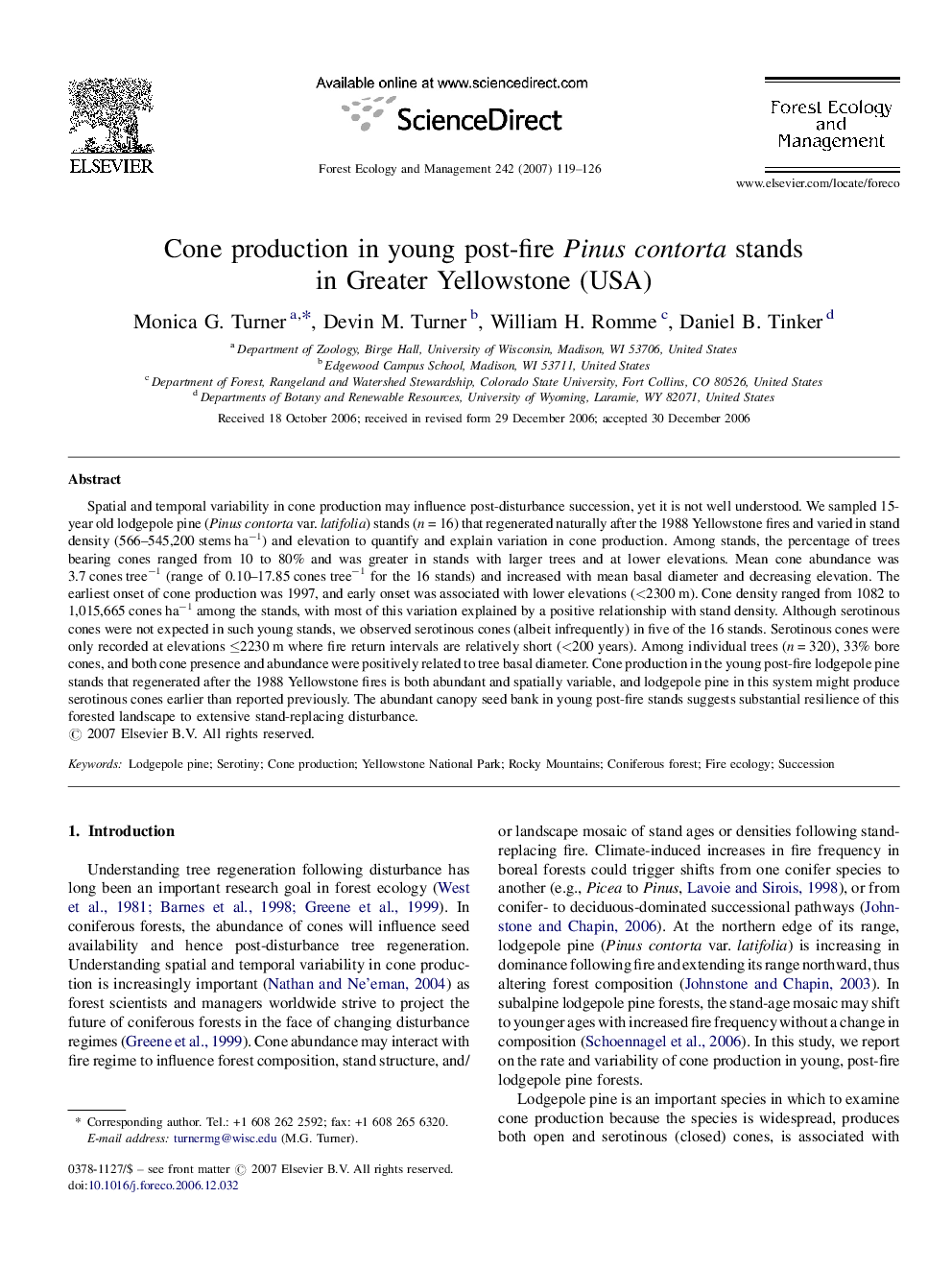| کد مقاله | کد نشریه | سال انتشار | مقاله انگلیسی | نسخه تمام متن |
|---|---|---|---|---|
| 90622 | 159391 | 2007 | 8 صفحه PDF | دانلود رایگان |

Spatial and temporal variability in cone production may influence post-disturbance succession, yet it is not well understood. We sampled 15-year old lodgepole pine (Pinus contorta var. latifolia) stands (n = 16) that regenerated naturally after the 1988 Yellowstone fires and varied in stand density (566–545,200 stems ha−1) and elevation to quantify and explain variation in cone production. Among stands, the percentage of trees bearing cones ranged from 10 to 80% and was greater in stands with larger trees and at lower elevations. Mean cone abundance was 3.7 cones tree−1 (range of 0.10–17.85 cones tree−1 for the 16 stands) and increased with mean basal diameter and decreasing elevation. The earliest onset of cone production was 1997, and early onset was associated with lower elevations (<2300 m). Cone density ranged from 1082 to 1,015,665 cones ha−1 among the stands, with most of this variation explained by a positive relationship with stand density. Although serotinous cones were not expected in such young stands, we observed serotinous cones (albeit infrequently) in five of the 16 stands. Serotinous cones were only recorded at elevations ≤2230 m where fire return intervals are relatively short (<200 years). Among individual trees (n = 320), 33% bore cones, and both cone presence and abundance were positively related to tree basal diameter. Cone production in the young post-fire lodgepole pine stands that regenerated after the 1988 Yellowstone fires is both abundant and spatially variable, and lodgepole pine in this system might produce serotinous cones earlier than reported previously. The abundant canopy seed bank in young post-fire stands suggests substantial resilience of this forested landscape to extensive stand-replacing disturbance.
Journal: Forest Ecology and Management - Volume 242, Issues 2–3, 30 April 2007, Pages 119–126